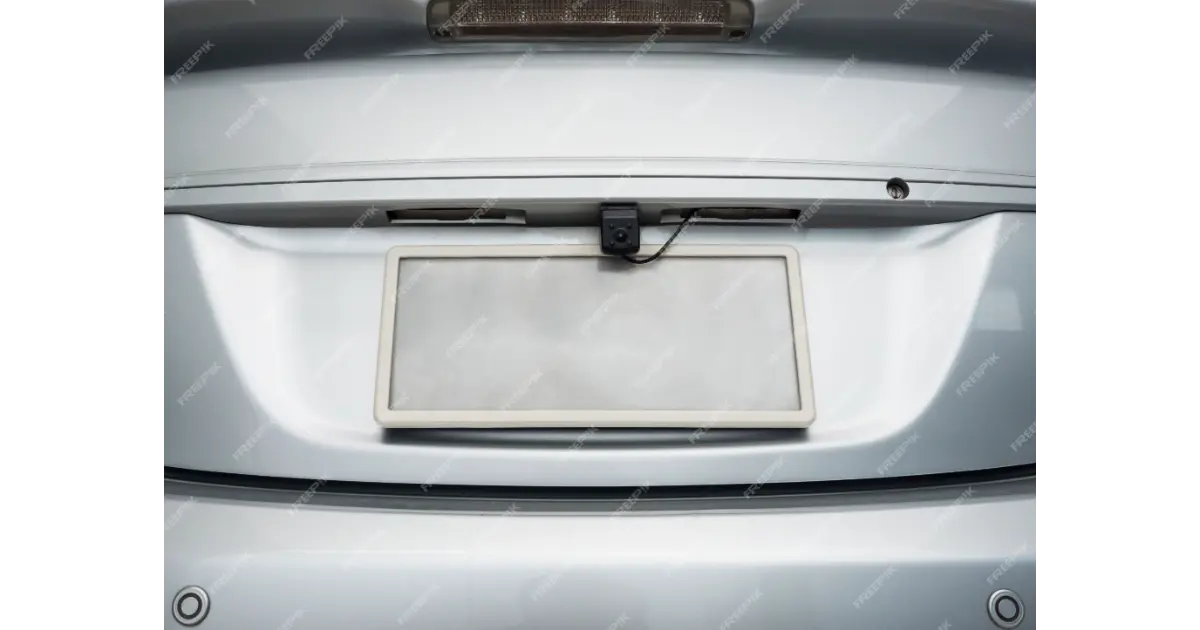Driving without a license plate is a scenario that often raises questions about legality and consequences. This introduction sets the stage for understanding the implications and nuances of operating a vehicle under such conditions.
The curiosity surrounding the ability to drive without a license plate hooks the reader with its blend of legality, potential risks, and the circumstances under which it might occur. It beckons a deeper exploration into the rules and exceptions of road regulations.
Defining the act of driving without a license plate involves examining the legal framework that governs vehicle identification. This definition uncovers the potential penalties, exceptions, and the importance of adhering to transportation laws to ensure safety and compliance on the road.
Understanding the Concept of License Plates
At its core, a license plate is more than just a piece of metal or plastic affixed to the front and back of a vehicle; it is a vehicle’s identity card, facilitating its recognition by authorities and fellow motorists alike.
Each plate features a unique combination of letters and numbers registered to a specific car and its owner, serving critical roles in law enforcement, road safety, and administrative processes. The concept of driving without one brings us to the heart of numerous legal frameworks designed to govern vehicle operation on public roads.
Navigating the Legalities and Implications of Driving Without a License Plate
Navigating the legalities and implications of driving without a license plate is crucial to responsible vehicle ownership. Often seen as a minor oversight, this practice can have significant legal repercussions and profoundly affect daily life. Understanding this domain’s legal framework, potential consequences, and exceptions is essential for all drivers.
Legal Considerations and Potential Consequences

Driving without a license plate is universally recognized as illegal across various jurisdictions, with laws strictly outlining the necessity for vehicles to be properly registered and display a valid license plate.
The enforcement of these laws is critical for road safety, law enforcement purposes, and the administration of road-related taxes and fees. When a vehicle is found operating without a license plate, consequences can range from fines and citations to vehicle impoundment and, in severe cases, criminal charges depending on the intent and circumstances.
Exceptions and Temporary Allowances
Despite the stringent rules, certain exceptions allow for the temporary absence of a license plate. Newly purchased vehicles, for example, may be granted a grace period during which a quick registration is issued until permanent plates are obtained.
This period varies by region but is a critical allowance that facilitates vehicle legal sale and use. Additionally, some jurisdictions offer temporary permits for other specific scenarios, such as vehicle importation or the transfer of ownership.
Practical Advice for Motorists
Immediate Registration: Upon acquiring a vehicle, prioritize obtaining a temporary registration and understanding the timeline for securing a permanent license plate.
Understanding Local Laws: Familiarize yourself with local regulations regarding license plates, including grace periods, temporary permits, and the process for replacing lost or stolen plates.
Maintaining Compliance: Ensure your vehicle remains compliant with all registration requirements, including the timely renewal of license plates and stickers.
Table: Summary of Key Points
| Aspect | Detail |
| Legal Requirement | Mandatory display of license plate |
| Consequences of Non-Compliance | Fines, vehicle impoundment, possible criminal charges |
| Exceptions | Temporary permits for new vehicles, specific legal scenarios |
| Advice for Motorists | Prioritize registration, understand local laws, maintain compliance |
Key Takeaways
Driving without a license plate is a legal issue with significant implications for motorists. While it might seem like a minor oversight, the consequences can be severe, ranging from fines to criminal charges in extreme cases.
Understanding the legal framework, potential impacts, and available exceptions allows for informed decision-making and compliance. Here’s a concise overview and guidance for navigating these waters:
Summary of Key Points
- Legal Requirement: Displaying a license plate is mandatory, serving as the vehicle’s identification for law enforcement, road safety, and administrative purposes.
- Consequences: Non-compliance can lead to fines, vehicle impoundment, and potentially criminal charges, highlighting the importance of adhering to this requirement.
- Exceptions: Temporary permits and grace periods are available in certain situations, such as newly purchased vehicles awaiting permanent registration.
Table: Navigating Legal Compliance
| Situation | Action Required | Potential Consequences |
| Driving without a license plate | Obtain temporary permit/register vehicle | Fines, impoundment, charges |
| Newly purchased vehicle | Use a temporary permit or paper tag | None (if compliant) |
| Lost or stolen license plate | Report and apply for replacement | None (if action is taken) |
FAQs
Is it ever legal to drive without a license plate?
Driving without a license plate is generally illegal. However, exceptions exist, such as when a vehicle is newly purchased and the owner waits for the permanent plates. During such times, temporary permits or paper tags issued by the authorities are required to drive legally.
What should I do if my license plate is lost or stolen?
Immediately report the loss or theft to the police and local vehicle registration authority. You will likely need to fill out a form and may be required to pay a fee for a replacement plate. It’s crucial to act quickly to avoid potential legal issues.
How long can I drive with a temporary license plate or permit?
The duration you can drive with a temporary license plate or permit varies by jurisdiction. Typically, it ranges from 15 to 90 days. Check with your local vehicle registration authority for the specific timeframe in your area.
Can I get fined for driving without a license plate?
Yes, driving without a license plate or a valid temporary permit can result in fines. The amount varies by location but can be substantial to enforce compliance.
What are the consequences of driving without a license plate aside from fines?
Beyond fines, consequences can include vehicle impoundment and criminal charges in cases of repeated offenses or fraudulent behavior. It’s also likely to result in being stopped by the police, which could lead to further scrutiny and delays.
Conclusion
Navigating the rules and regulations surrounding the requirement to display a license plate is essential for all drivers. The license plate is more than just a piece of metal or plastic; it’s a vehicle’s identity and a crucial aspect of road legality and safety.
While there are legitimate scenarios where driving without a permanent license plate is temporarily permissible, understanding the correct process and ensuring compliance with temporary permits is critical to avoiding legal issues.









